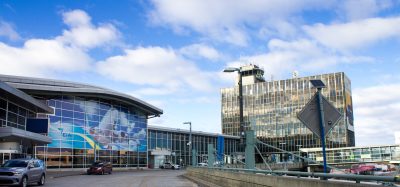Smooth winter maintenance safeguards Helsinki’s Asian strategy
- Like
- Digg
- Del
- Tumblr
- VKontakte
- Buffer
- Love This
- Odnoklassniki
- Meneame
- Blogger
- Amazon
- Yahoo Mail
- Gmail
- AOL
- Newsvine
- HackerNews
- Evernote
- MySpace
- Mail.ru
- Viadeo
- Line
- Comments
- Yummly
- SMS
- Viber
- Telegram
- Subscribe
- Skype
- Facebook Messenger
- Kakao
- LiveJournal
- Yammer
- Edgar
- Fintel
- Mix
- Instapaper
- Copy Link
Posted: 26 January 2011 | Tim Bird, Freelance Writer | No comments yet
While many airports across Europe are suffering delays and disruption as winter sets in, Helsinki is taking the conditions in its stride – as it does from year-to-year. The success of its strategy as a fast, efficient hub for flights between Europe and Asia depends on it.
It’s the week before Christmas at Helsinki International Airport. A carpet of snow, up to half a metre deep, covers the surrounding forests and fields and the digital thermometers of which Finns are so fond read -10°C. The snow and cold have come early this year.
While many airports across Europe are suffering delays and disruption as winter sets in, Helsinki is taking the conditions in its stride – as it does from year-to-year. The success of its strategy as a fast, efficient hub for flights between Europe and Asia depends on it.
It’s the week before Christmas at Helsinki International Airport. A carpet of snow, up to half a metre deep, covers the surrounding forests and fields and the digital thermometers of which Finns are so fond read -10°C. The snow and cold have come early this year.
Even so, the departure monitors in the transit hall are predominantly green, with most flights leaving as scheduled. At Helsinki Airport, despite the bone-biting chill and accumulating snow, an air of calm prevails.
You only have to look at the map to understand the importance of Helsinki as a significant international transfer airport. Thanks to its geographical location the shortest route between Asia and Europe goes via Helsinki. Helsinki is the leading long-haul airport in Northern Europe, and smooth transfer operations are vital.
The ability to keep Helsinki open is not just a badge of considerable professional pride for those who manage it; it’s also a matter of economic necessity the continuing growth of which depends on fast connections, decongested airspace and punctuality. None of these conditions can be met if the runways are blocked with snow.
“We are often asked to explain how we manage the winter operations so well. I would say that it results from a combination of resources and equipment with efficient processes and, most of all, cooperation between different airport parties.” says Heini Noronen-Juhola, Vice President, Aviation and Safety, the division of Helsinki Airport Operations that is charged with maintenance.
When HEL freezes over
Helsinki is on the southern tip of Finland so is usually spared the extended spells of temperatures below minus 20 that are the norm in the Arctic north of the country. Just the same, heavy snowfalls and extreme cold are part of the winter package in southern Finland, too. Infrastructure and architecture are planned with these extremities in mind. The winter of 2010-2011 started where the previous winter left off, with more snow and lower temperatures than average.
In 2009-2010 the total snowfall at Helsinki Airport was measured as 188 centimetres, with a maximum of about 70 centimetres on the ground. A 10 centimetre layer on the airport’s apron area – about 105,000m3 – is equivalent to 7,000 truckloads of the white stuff. That’s not including the 250,000m3 that accumulated on the manoeuvring area. The total snow fall of 188 centimetres represents 131,000 truckloads of snow – and that’s just on the aprons.
Jyrki Pulkkinen, Helsinki’s Airfield Maintenance Manager, agrees that organisation and cooperation, in addition to well tested procedures, is the key to shifting these enormous winter deposits and ensuring that aircraft are in a fit condition to take to the air without regular delays.
“Our organisation is grouped in five different sectors,” he explains. “One deals with environmental waters (involving glycol handling, for example). A second one is running our own workshop and maintaining our own equipment. The third sector looks after the manoeuvring area, with five teams working 24/7 every day. The fourth takes care of apron area maintenance in two shifts between 6am and 10pm and continuing over the night if necessary. The last sector deals with the traffic area on the land side of the airport, including access roads and parking areas.”
Jyrki’s specific responsibility is maintaining the airport’s total land area of about 18km2. The manoeuvring area consists of 2.5 million square metres of asphalt and a similar area of grassland, with the asphalt apron area accounting for a little over a million square metres. Jyrki’s area of responsibility is completed by 500,000m2 of roads, pavements and parking zones.
A so-called ‘snow-desk’ function coordinates the crucial communication between winter maintenance operations and ATC. “My supervisors discuss with those in the airport’s ATC as part of standard operational procedure,” says Jyrki. “We depend a great deal on forecasts from the Finnish Meteorological Institute especially because of our shift work structure. We cannot carry out our work when it snows continuously for some hours using a normal shift, so we use contracted staff who are always on standby in the winter.”
The ‘regular’ airport maintenance staffs of about 80, including 18 office and supervisory staff have been supplemented for the 2010- 2011 winter by a seasonal workforce of 40, while contractors take care of snow clearance, transport and de-icing. This seasonal flexibility is obviously more cost-effective than employing a large workforce throughout the year – a situation that might be required by regulation in some countries.
Training days
Training and practice are vital to preserving the highest levels of efficiency. Autumn training days are held in preparation for the coming winter. “We can train when there’s no snow, but in any case most of our seasonal workers return to us each year, we have personnel that undergoes minimal changes from year to year,” explains Jyrki. “Practice makes perfect. We focus on the process and cooperation with other units, with airlines, with contractors, handling companies, as well as on basic training for safety management and how to use our equipment. This equipment is a bit different from that used outside the airport for snow clearing.”
Helsinki Airport’s winter maintenance resources are comprised of a formidable fleet of 10 PSB5500 sweepers, six high-power snow blowers and six combi-spreaders. There are also four runway friction tester vehicles, three ILS (Instrument Landing System) area snow blowers and various trucks and cars available. Special equipment for the apron area includes five sweepers and a couple of reserve SB sweepers, spreaders for chemicals and sand, a front sweeper, suction sweepers and snow blowers.
So surely these resources come at a high financial cost? “If you compare Helsinki with other airports in Finland, of course it has the biggest budget, but it’s my understanding that the expense is not exceptional in international terms,” says Heini. “We would like to invest in new equipment more often, but we have to think carefully when we invest in costly new equipment. We try to keep our own equipment in the best possible shape which is why we have our own workshop, maintaining about 250 vehicles. More-and-more airports have outsourced their workshops but this snow clearing equipment is so specialized that we want to keep the knowledge within our organisation. It’s a question of strategy.”
More sustainable methods
The airport is also developing more environmentally sustainable technologies and procedures to deal with extreme winter conditions. “In the new terminal areas we have some aircraft stands which are heated with district heating network return water,” says Jyrki. “Other stands are partly heated with an electric system. For us it is not necessary to heat the stand area throughout as at some airports. When the temperature is around -10°C it’s easier to maintain when it’s dry and unheated. Using chemicals can lead to slippery conditions when the snow melts and refreezes.”
Hot-air blowing for de-icing is another procedure increasingly favoured. “De-icing is typically carried out by ground-handling companies, usually with glycol. This winter several companies have started to experiment with hot-air blowing,” says Heini. “It can be used to reduce the amount of glycol used, which is cost-effective as well as more environmentally friendly because glycol has to be collected and disposed of.”
“It’s our task to inform the handling companies where they can wash using glycol and where this is not allowed. We allocate stands for de-icing but mostly we promote remote deicing whenever possible. We have one remote de-icing area and we are building another. Washes have had to be done in the apron area which has been problematic from an environmental point of view. The new de-icing area will be ready by November 2011 and this will improve the procedure considerably and substantially reduce washing in the apron area.”
Six special units are available for absorbing and removing used glycol. Re-use of glycol is prohibitively costly, so the waste is collected and safely dumped in municipal drains, along with the ‘pink snow’ which is moved to two isolated collection points. Glycol is used at other airports for dispersing snow cover on runways, but at Helsinki potassium formiate is the chemical of choice – but only when the preferred mechanical methods are not feasible, usually at temperatures just above or just below freezing point. Regardless of the conditions, Heini stresses, safety is the top priority and no compromises are made or corners cut to get planes landed or in the air more quickly.
Having said that, the speed with which runways are cleared is highly impressive. “It takes us about 11 minutes to clear one of our three runways, including the exit and taxi ways to and from the runway,” says Jyrki. “The close cooperation with ATC means that when we are performing maintenance on one runway, another is being used for flights. In small snowfalls the customer probably won’t even notice that it’s snowing. Of course the speed with which the runways become covered with snow again depends on the severity of the weather.
Cooperation most important
“We follow ICAO regulations and national regulations, including those for maximum contamination on the runway. A lot of what we do for airport maintenance is visible, but we are also busy behind the scenes arranging runway inspections and making sure that information is reliable for the next maintenance. One part of successful maintenance is the resources you have and how you use them; another is regulations. Close and effective cooperation between different parties is the most important aspect – that’s our main thing.”
Helsinki Airport is well prepared to avoid the annual hand-wringing that occurs in some European countries, where airports grind to a halt after relatively light snow falls. Jyrki points out that the possession of three runways at Helsinki contributes to maintenance efficiency. If an airport only has a single runway, no aircraft movements are possible while it is being maintained. Runway contamination limits also vary from country to country.
Heini does not dismiss the idea of Helsinki Airport starting to offer its snow-how on a consultancy package basis to other airports that want to develop their winter maintenance. But for now the team is happy to share its expertise on a more informal basis. “If they want to come and see what we do, they are welcome. It’s in everyone’s interest – and we might have some questions for them, too!”
About the Author
Tim Bird is a British Freelance Journalist who lives and works in Finland. He contributes regularly to the Finnair inflight magazine ‘Blue Wings’ and writes extensively on Finnish life for many European and US Publications.
















